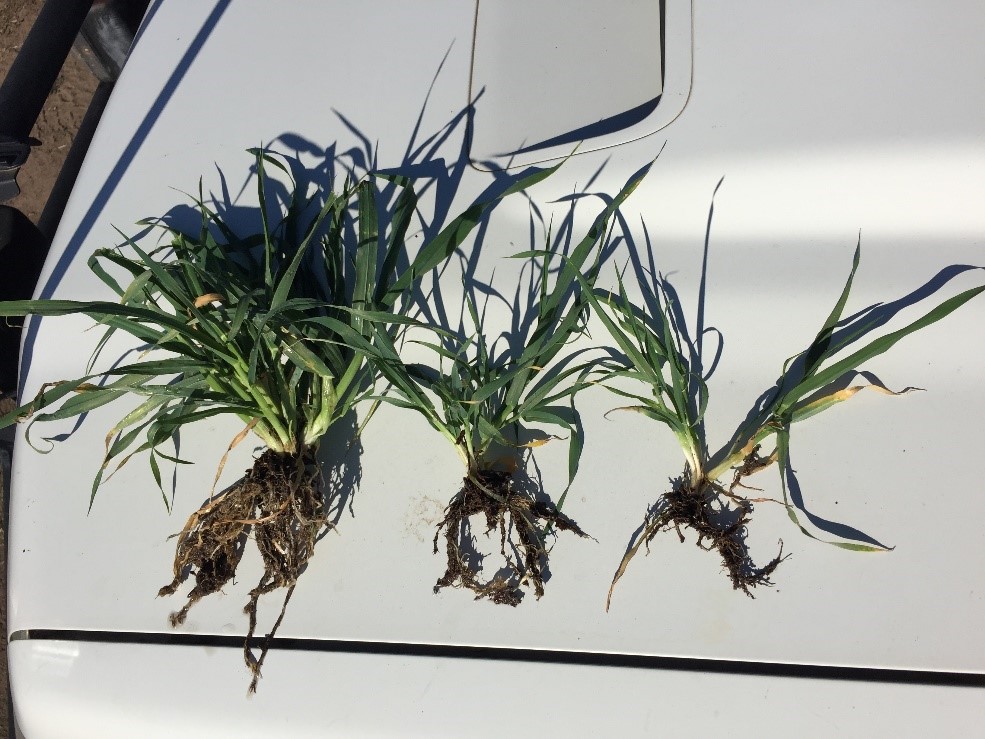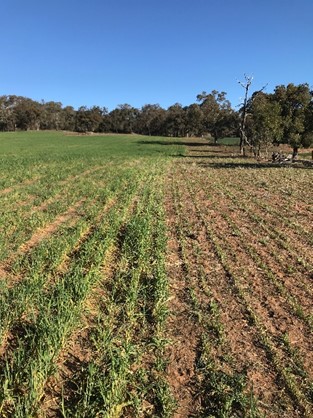A picture tells 1000 words but should you believe it?
Callen Thompson, Senior Land Services Officer – Mixed Farming
In days gone by, salesmen would go from farm to farm selling new products set to revolutionise the way farming was done. Alternatively farmers might see new technologies demonstrated at field days or the local show.
In the modern era of internet, social media, email and direct marketing, there is so many new chemicals, implements, tools and even farm management strategies that are marketed to us constantly as part of our everyday life.
The problem we have is knowing which of these technologies works and fits into our own production system and what is just a “snake oil”.
Photos are often used as a marketing tool to show the treated vs untreated. Very often I see marketing of a new technology that is supposed to increase growth and yield of a particular crop. Two plants will be shown, often on the tray or bonnet of a ute. The treated plant is always bigger, with more tillers and with a massive root system. The untreated is always small with only a couple of tillers.

Photo 1: Three barley plants all treated exactly the same!
The photo above shows three barley plants as I have described, one is larger than the other two, it has many tillers and a larger root system. You would expect that this is the plant that has been treated. In fact, these three plants were sitting right next to each other, all plants have been treated the same. This just goes to show how easy it is to pick out plants within a population to tell the story you want.

Photo 2: Cattle have selectively grazed the forage oats on the right.
Photo 2 shows a strip of forage oats in a paddock of forage barley, it is easy to see that the stock preferentially grazed the oats rather than the barley. A savvy marketer might say that stock would prefer to eat this particular variety of oats over the competitor’s barley. In fact the variety or species had very little to do with the steers choice to eat the oats.
The oats were at a vegetative stage while the barley, being much earlier to maturity, had started to go reproductive. The preferential grazing was because of greater palatability due to growth stage. It is hard to know the full story when you are just looking at a photo.
Far too often we see photos of neighbouring paddocks, one “good” the other “bad” often with a boundary fence in between. We are told the difference we see is due to management, a product or some other technology, but we don’t know what other management factors have contributed to the results we see in the photo. Again, we don’t know the back story.
So, with the large amount of marketing directed at us, how do you know what information to trust? A soils lecturer, Dr Chris Guppy, gave us some great advice in our final year at UNE. Always think critically. My advice is to always question someone who is trying to sell something to you. The questions I ask are:
- How/why does the technology work? Is this scientifically valid?
- Is there replicated and peer reviewed trials to show the benefit of the new technology and if the trial was done again, would you get the same results?
- Is there a significant difference between the treatment and an untreated control? Does this difference lead to an improvement in yield and profit?
- Has the technology gone through government or industry scrutiny, for instance is the product registered through APVMA?
- Is the company marketing the new technology trustworthy, do they have an existing credibility and presence that they need to keep?
- Is the company willing to give you/your agronomist/DPI sample product to put in a replicated trial?
Finally and maybe most importantly:
- Does implementing the new technology bring you closer to reaching your production, financial, social and environmental goals?
This is not to say that you shouldn’t try new things.
I am sure that when John Bennett Lawes first started to promote superphosphate in 1843, many people would have been quite sceptical.
There will continue to be new technologies, products and management strategies entering the market, which will greatly improve agricultural production. If you are interested in setting up some on farm trials with a technology someone has suggested you try, give your Local Land Services ag advisor a call.
They would be happy to give you direction on how to set up a replicated trial and collect usable results.